A still from Renee Zhan’s “SHÉ (SNAKE),” which screened as part of the Midnight Short Film Program at the 2024 Sundance Film Festival
By Lucy Spicer
One of the most exciting things about the Sundance Film Festival is having a front-row seat for the bright future of independent filmmaking. While we can learn a lot about the filmmakers from the 2024 Sundance Film Festival through the art that these storytellers share with us, there’s always more we can learn about them as people. This year, we decided to get to the bottom of those artistic wells with our ongoing series: Give Me the Backstory!
We never need an excuse to hype the medium of short film at Sundance Institute, but we’re thrilled to offer shorts lovers multiple reasons to celebrate as we approach the summer season. If you missed the Festival in January (or want to relive some of your favorite Fest shorts in theaters), you can catch a curated program of short films from the 2024 Festival as part of the 2024 Sundance Film Festival Short Film Tour, which kicks off in June.
And if you love making short films as much as we love watching them, we’ve got more good news for you: Submissions to the 2025 Sundance Film Festival are now open, and we can’t wait to watch the next wave of independent storytellers bring their short films to the big screen.
Last but certainly not least, as we continue to commemorate Asian American and Pacific Islander Heritage Month, it’s the perfect time to get to know some of the AAPI filmmakers whose short films played at the 2024 Sundance Film Festival. Gain some insight into these eight creatives — in their own words — below, including what inspired their 2024 Festival shorts, which feature an ultra-revealing view of isolation, a portrait of an artists village known for replicas, nightmarish instructions from a familiar voice, an award-winning tale of a half-crab’s journey to self-acceptance, romance sparked at Cowboy Church, the struggles that accompany sex addiction, an animated origin story of a lake, and the monstrous consequences of competition.
Read on to learn more about eight of the innovative AAPI filmmakers who brought their unique voices to the 2024 Sundance Film Festival Short Film Program.
What was the biggest inspiration behind the film?
Whammy Alcazaren (Bold Eagle): “I tried to dig a little deeper thinking about this. But it really was all rooted in my fascination with dick and buttholes during isolation. Bold Eagle is a pandemic film. I survived the crazy time of being trapped at home because of the internet. Sitting, staring, and contemplating who I am and my place in the universe, I sought escape through Twitter and other forms of social media. This is very much what the film is about — alleviating loneliness and self-implosion through the beautiful cyber release allowed by technology.”
Dongnan Chen (14 Paintings): “At the beginning, I wanted to make a film within Dafen Village — to film the painters’ community during this transition from copying to creating. But just as we started to research, in December 2022, I tested positive for COVID. It was a time when the ban was just lifted in China and almost a billion people got sick at the same time… So it was hard to meet people for interviews and everything. I quarantined myself in the Vienna Hotel near Dafen.
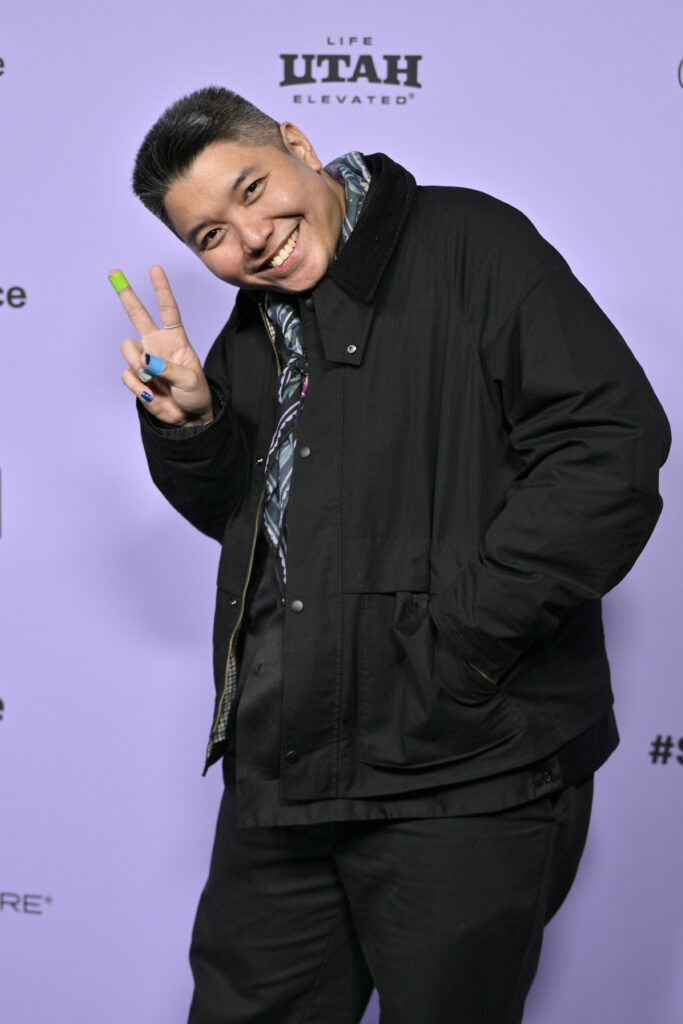
Writer-director Whammy Alcazaren attends the January 22 premiere of the Midnight Short Film Program at The Ray Theatre in Park City. (Photo by Stephen Greathouse/Shutterstock for Sundance Film Festival)
“For 10 days, the only ‘human element’ in my room was a classical western-style portrait of a young woman. I stayed in bed, stared at her blue eyes every day, and developed this inexplicable feeling with that painting. And when I finally walked out of that room, I began to notice these decorative paintings are basically everywhere — restaurants, offices, hospitals, schools, parks, etc. — and very much likely they’re from Dafen, because now 70–80% of these decorative paintings in China are from this village. That’s when I realized how Dafen’s paintings permeate our society. Even though often ignored, they are no doubt indivisible parts of our daily landscape. It forms a map through the paintings and connects the snippets of our lives in a weird yet very interesting way. Then, I think, instead of focusing on the village itself, I wanted to explore this relationship between the painters, the buyers, the paintings, and the physical spaces in which they’re hung. This social impact is what makes Dafen unique as an art district.”
Carlos A.F. Lopez (Dream Creep): “There are two events that shaped the core ideas that inspire the film. The first came when I woke up one night to a loud crash. I was unsure if the crash occurred in my dream and had woken me up, or if it had really happened and there was actual danger in my house. From that acute state of terror, I wanted to explore how someone thrust into a waking nightmare would deal with harrowing life-or-death decisions.
“The other came similarly, as I was awakened once again by a sound in the night. This time I was confident it was a dream, but as I lay looking at my partner sleeping, I was struck by the idea of what if it wasn’t my dream I had heard but theirs. From these two experiences the story of Dream Creep blossomed. The horror genre seemed like the perfect housing for these surreal and metaphysical questions to play out against a very domestic and grounded reality.”
Makoto Nagahisa (Pisko the Crab Child is in Love): “I was inspired by diversity and racism to create this film.”
Diffan Sina Norman (Pasture Prime): “I read Carolyn Purnell’s script Pasture Prime at a moment where I was obsessed with The Bridges of Madison County and screen adaptations of Larry McMurtry. We had just moved to East Texas, and I was immediately captivated by how her story expressed the off-kilter sensuality of the South. It was insidious, sexy, and sincere. It made me rethink biases I had never considered, and I found that really inspiring.”
Alexandra Qin (Thirstygirl): “I am a recovering sex addict. Hitting bottom in this addiction was the single most painful time in my life. For my first film, I knew I wanted to explore this subject. My relationship with my younger sister is also a huge inspiration for the film. I often say Thirstygirl is a love letter to my baby sis.”
Alisi Telengut (Baigal Nuur – Lake Baikal): “The short animated film reimagines the formation of Lake Baikal, the oldest and deepest freshwater lake in the world, featuring the voice of an Indigenous Buryat woman who can still recall some words in her mother tongue in Mongolian (Buryat dialect). The film explores the human-nature relationship embedded in the Indigenous worldview and language, where humans are seen as interconnected with nature, including all living and nonliving things, rather than separate from them.”
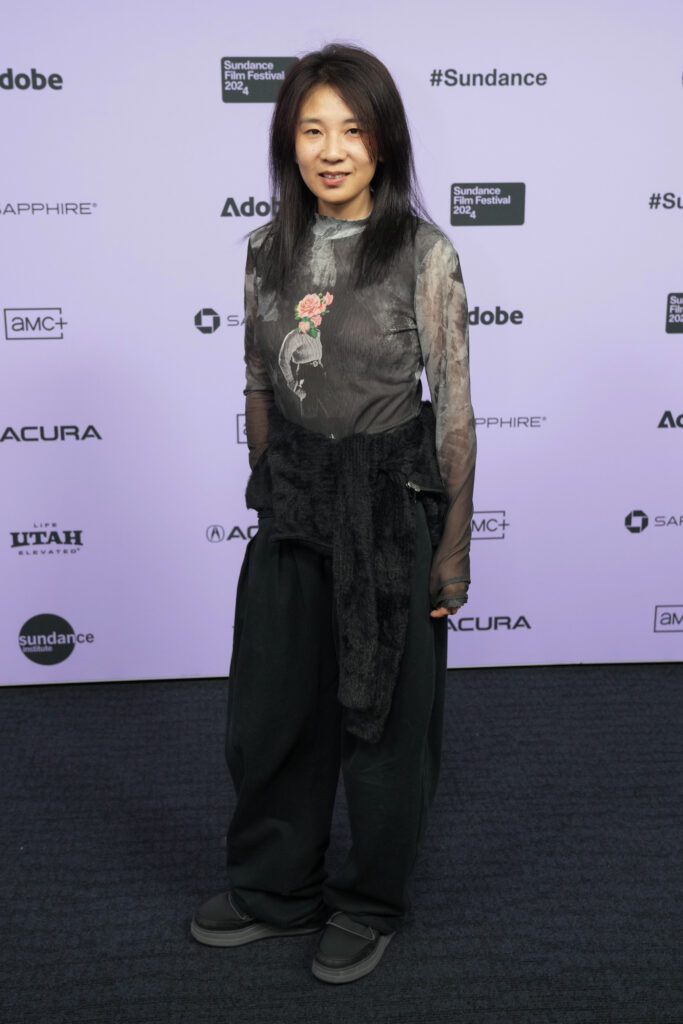
Filmmaker Dongnan Chen attends the January 20 premiere of the Documentary Short Film Program at The Ray Theatre in Park City. (Photo by Suzanne Cordeiro/Shutterstock for Sundance Film Festival)
Renee Zhan (SHÉ (SNAKE)): “I played violin for 15 years and hated it.”
Why does this story need to be told now?
Alcazaren: “Bold Eagle was shot on the iPhone 13 Pro Max. In terms of form, I feel that we are on the verge of new development of cinematic language. Cinema has been more accessible for quite some time now both in terms of reach and production. The big idea behind this, in my opinion, is the technology provided by phones. Now almost anyone can watch a film anytime and anywhere. And at the same time, anyone can make a film. With the growth of TikTok storytelling and Instagram reels, we’ve come a long way from Vines on YouTube. This is how I see what Bold Eagle is. It is an attempt in making use of this new cinematic language to create a new filmic experience. New things are happening, and I think we should get on this ride and experience it.
“Bold Eagle is a queer takedown of the current president of the Philippines, Bongbong Marcos. Cinema is political. It is especially so in the Philippines.
“The film is, albeit lightly, a queer retelling of the dilemmas of our current president as he fathoms to live up to the legacy of his late dictator father. How he wishes to simply go back to simpler times, to the days back in Hawai‘i when all was just fun and games with the boys.”
Qin: “Sex and porn addiction are not currently recognized as clinical diagnoses in the DSM-5, yet 10% of Americans say they have a porn addiction. There’s still a huge stigma around this subject, especially in Asian and immigrant communities. Thirstygirl is the story I needed to see when I was hitting bottom.”
Telengut: “Indigenous peoples are among the populations most immediately affected by climate change and human-induced rapid environmental degradation. The disappearance of habitats for both humans and nonhumans, caused by the melting tundra and the warming taiga, is parallel to the accelerated loss of Native languages, often exacerbated by the historical impacts of colonization.”
Tell us an anecdote about casting or working with your actor(s).
Alcazaren: “For the casting of the film, we wanted a real “alter” performer to play the lead. “Alter” performers are people who perform lewd acts in the darker corners of the internet for free, highlighted by the fact that they do not show their faces. They do it not for the money but for the gratification they receive from other anonymous viewers. Given this, it isn’t surprising to say that our final cast lead had very little acting experience. It was a particularly fun challenge to workshop him on how to act like a cat. We practiced it a few times. We figured out how to crawl, purr, and generally act as a cat would. Meow. Meow. It was nice to work with nonactors, the real cat included. It was organic and a lot of fun.”
Lopez: “Our lead actor, Ian Edlund, walked onto set the first day we were shooting sporting a freshly grown mustache. We’re old buds, so initially I thought he was pranking me and was going to shave it off before we started filming.
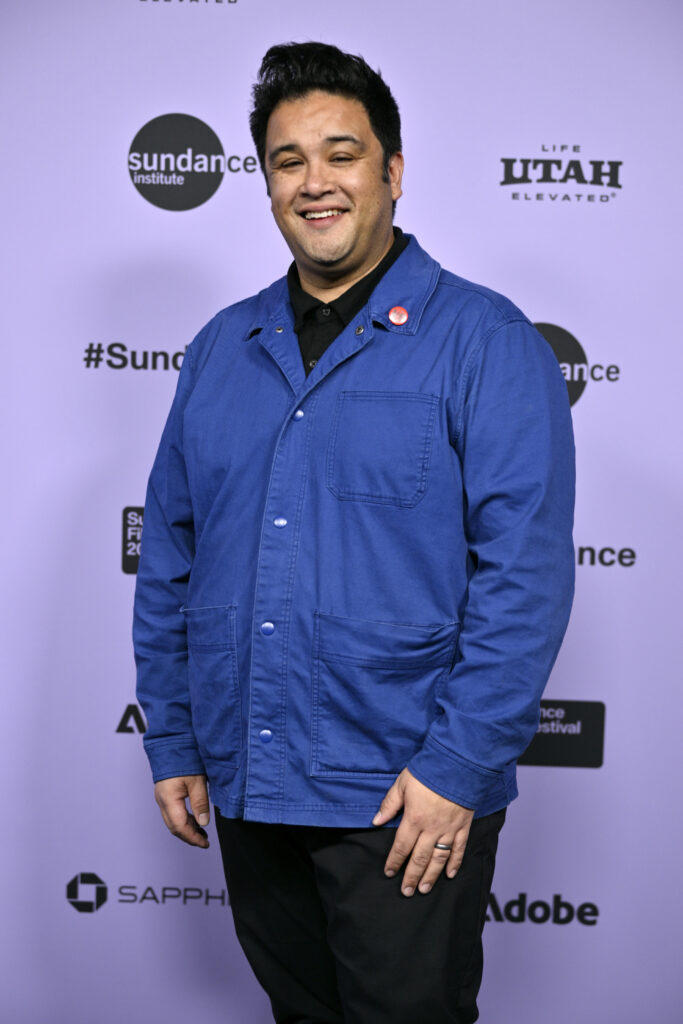
Writer-director Carlos A.F. Lopez attends the January 22 premiere of the Midnight Short Film Program at The Ray Theatre in Park City. (Photo by Stephen Greathouse/Shutterstock for Sundance Film Festival)
“When I realized he had grown it specifically for the role, I was taken aback, because it wasn’t an aspect of the character we had talked about. I wanted to respect his process and felt bad that I had initially laughed off the reveal of ‘the mustache.’
“After the subterfuge of the moment passed and I had time to really consider it, I realized what a thoughtful and perfect choice he had made and what a great layer he added to the character. I had never thought so much about a mustache in my life. It was a great lesson in truly staying open to what your collaborators can bring to the table. Man, I love that mustache.”
Nagahisa: “This film started because a Japanese TV variety program called Let’s Make a Film got in touch with me. That’s why our three women actors are actually comedians and don’t normally work as actors.
I found it wonderful how they were not interested in making themselves look cool.
We shot everything in one day and needed just one take for most shots. They are truly brilliant.”
Norman: “Carolyn was promoting her book Blue Jeans on a morning news show hosted by Susan Kirton. That evening, Carolyn and I ran into Susan and her husband, Patrick. We hadn’t even started casting, but immediately knew they were right. The rest is glory.”
Zhan: “I loved the casting process and working with casting director Isabella Odoffin. Coming from an animation background, it was my first time working with actors on set, so I was scared shitless and faking it the whole time. Over the course of the shoot, I learned that human actors are much wigglier and have more opinions than puppets do. But they also have more to bring — their own stories, emotions, and insight into the filmmaking process. I loved working with my actors. They taught me so much, and I was blown away every day by their work and dedication.”
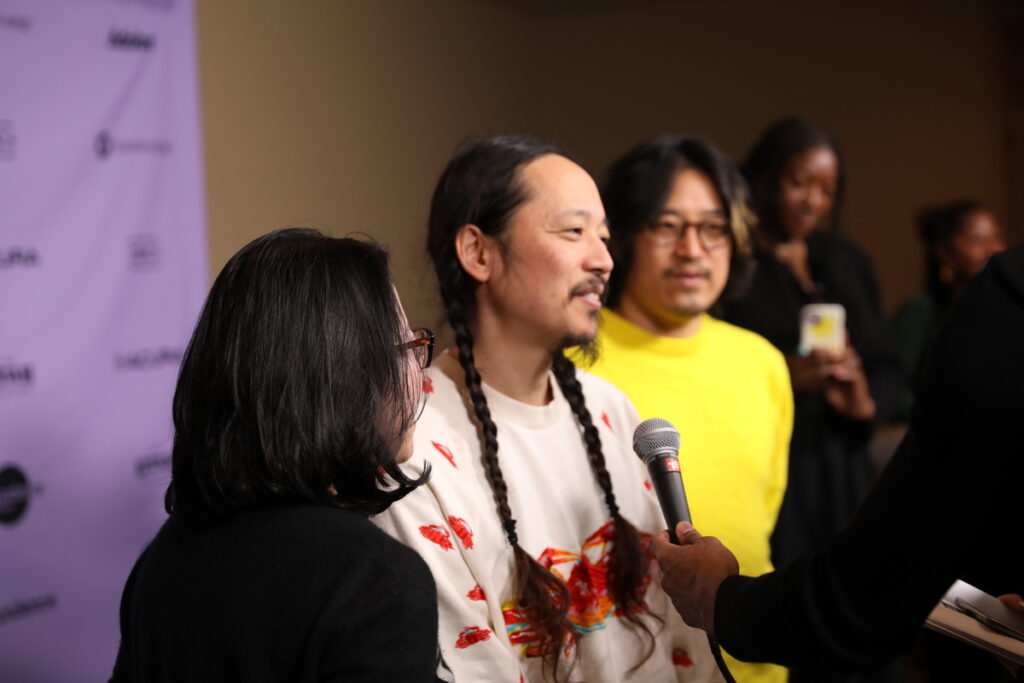
Writer-director Makoto Nagahisa attends the January 18 premiere of Short Film Program 1 at Prospector Square Theatre in Park City. (Photo by Maya Dehlin)
Films are lasting artistic legacies; what do you want yours to say?
Norman: “I’ve always admired the complexity of late love in films like Shirley Valentine, White Palace, and Notes on a Scandal. The tenderness of a person discovering love later in life, despite their impending mortality, often results in a less filtered state of truth. It’s punk rock, ‘outlaw,’ and, if I may, exceptionally Texan. So, fall in love. Stay vulnerable. It’s okay to get it wrong.”
Zhan: “The genesis of the film came from an experience I’ve had many times — being in the same room as another Asian girl, and inevitably getting mixed up and called each other’s names, no matter how alike or different we look. I wanted to capture that feeling that a lot of minorities have experienced — the feeling of being replaceable. After feeling that feeling enough times, instead of seeing other members of your own race as allies, you start to see them as competition. And when that feeling is internalized, you start to see yourself as something hateful and monstrous. I wanted to make a film that was a triumph against that feeling, a fantastical film about the power of friendship to overcome that self-hatred and internalized racism.”
Your favorite part of making the film? Memories from the process?
Qin: “I really loved the day we spent shooting at the Cortlandt Lanes bowling alley. It felt like everything was going right. The scenes were dynamic and emotional. The lighting was gorgeous. We had a bunch of local bowlers join as extras, which was very fun. That day felt like all the stress and all the hard work was worth it and I could keep doing this forever.”
Telengut: “My favorite part of making the film was gathering lots of stones, leaves, and other objects in nature for the animation. During the pandemic, I traveled almost every day from Berlin to Potsdam in a work space. On the way, I observed mosses, stones, trees, and many small things on the ground, around me, everywhere in the environment. I picked up stones here and there in Potsdam. There are some crystals used in the film, and they were hand-harvested on the Alps in Switzerland by a friend who grew up on the mountains. She is familiar with the regional geology and knows the techniques of where to find the crystals. These objects are the stars and collaborators in the film.”
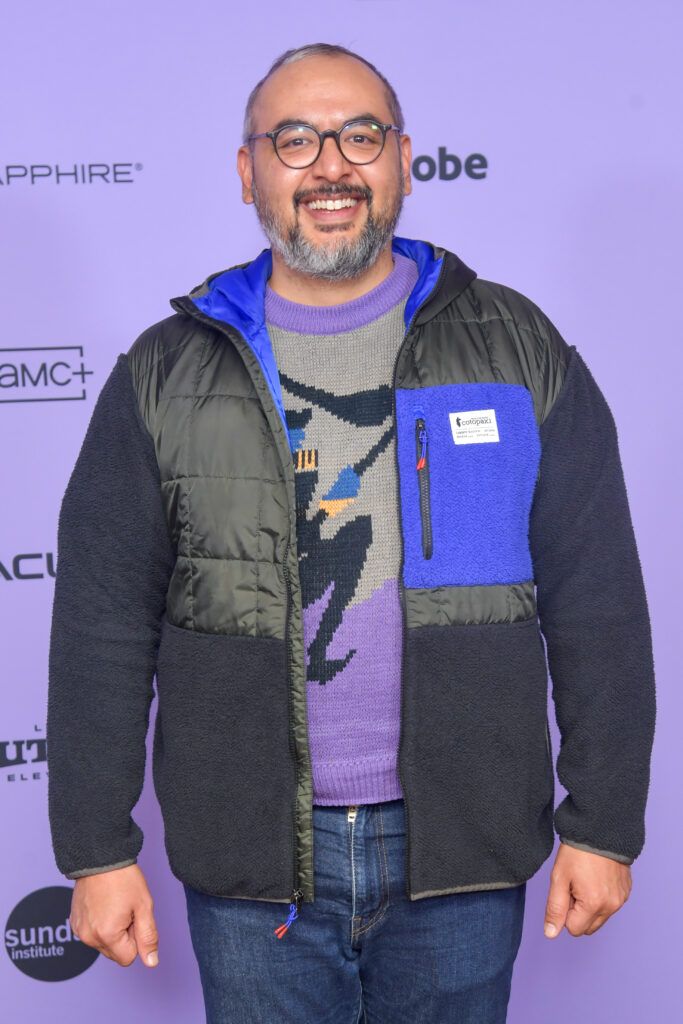
Director Diffan Sina Norman attends the January 20 premiere of Short Film Program 2 at the Egyptian Theatre in Park City. (Photo by Stephen Lovekin/Shutterstock for Sundance Film Festival)
What was a big challenge you faced while making this film?
Chen: “The biggest challenge is to get..